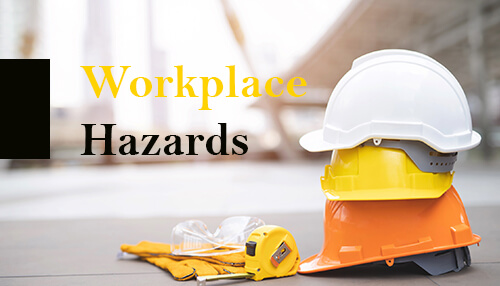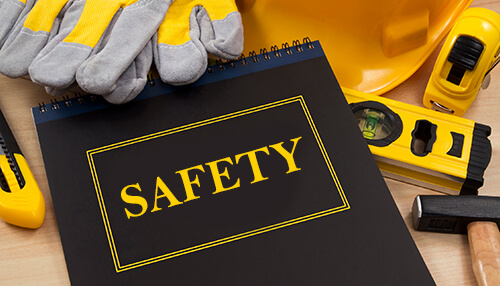One of the key roles of safety leaders and liable persons is to identify, assess, and mitigate workplace hazards. Identifying hazards is essential to prevent injuries at the workplace. It is also an essential part of keeping up with safety and health compliance and the laws.
Hazards are the root cause of major health and safety risks, so it is not possible to keep workplaces safe without identifying them. This piece of content will walk the readers through different ways to identify hazards at work.
What are Workplace Hazards?
Workplace hazards are the sources of potential harm to anyone or anything within a work setting. It could be any activity that has the potential to cause injuries under specific situations. If a workplace encounters a hazard, it should be prevented as soon as possible to eliminate the risk of incidents and fatalities.
The Occupational Safety and Health Admiration (OSHA), says that one of the main reasons for workplace accidents, injuries, or ill health at work is due to inadequate knowledge to identify and recognize workplace hazards. And so, it divides the hazards into six major categories as below.
Types of Workplace Hazards
Below are the 6 most common types of workplace hazards:
1. Safety
Safety usually occurs at construction sites and is a common type of workplace hazard. This involves unsafe working conditions causing injuries, illnesses, or ill health. Examples of safety hazards include working from height, confined spaces, electrical hazards, unguarded machinery, or slips and fall hazards.
Employers of the staff must take account of these hazards and provide them with vital information and training as needed. For example, working at height training, confined space training slips trips and falls training, or electrical safety training provides them with some hands-on experience to work safely.
2. Physical
Physical hazards are the environmental factors that produce harm or damage to the body without touching it. This includes extreme weather conditions, radiation, exposure to long-term noise at work, or exposure to sunlight and UV radiation. For instance, workers who regularly handle X-rays should use protective gear like Xray lead aprons to minimize radiation exposure. These aprons are essential for ensuring safety in environments where radiation is a constant risk.
Employers can provide their staff with noise at work training or other forms of health and safety training to ensure their safety.
3. Ergonomic
Ergonomic hazards arise when the type of work or working conditions put stress and strain on the body. Such hazards are difficult to identify as individuals do not immediately notice such type of work putting strain on them.
4. Organization
Organizational hazards are the factors that result in stress, anxiety, or aggressive behaviors among individuals. These can occur in the form of short-term stress or long-term strains, due to workload, lack of control, or other factors.
5. Chemical
Chemical hazards occur when a worker is exposed to hazardous material while at work. These could be any form of solid, liquid, or gas that has the potential to cause severe illnesses. The chemical hazards can range from skin irritation, illnesses, breathing problems, or even cancer.
6. Biological
Animals, people, or infectious plants can be linked as sources of biological hazards. The types of biological hazards workers may be exposed to are blood or bodily fluids, bacteria or viruses, fungi, or insect bites.
What is Hazard Identification?
Hazard identification is the risk assessment practice to identify and record health and safety risks at work. We usually do it:
- We introduce new processes, equipment, and machinery at work.
- During formal & informal inspections of a workplace
- After an accident or incident occur
Steps to Identify the Workplace Hazards
Below is a five-step process to identify hazards at work:
1. Collect Existing Information About Workplace Hazards
The first step of the process to minimize workplace hazards, according to OSHA is to gather information about the hazards and risks present on the work site. This can be done in different ways like looking at the hazard recorded in the previous risk assessment process or by analyzing its nature.
2. Inspect the Workplace for Any Health Hazard
After that you have gathered the information on workplace hazards it is now time to inspect any or all within your work premises. For instance, new hazards may arise when work processes or procedures change or a new system is introduced. Managers and employers need to be vigilant to inspect any possibility of deadly hazards in their vicinity.
3. Identify Health-related Hazards
The third step of the process is to identify the health hazards at work. These hazards make it quite complicated to analyze, as they are not immediately recognizable. For example, a person suffering from stress, strain, or a contagious virus may develop symptoms over time and can a long while to diagnose.
4. Conduct Incident Investigations
This step includes examining all the incidents and occurrences that resulted in the past or have the potential to cause damage in the future. One effective technique is to have proper near-miss reporting systems within the workplaces so that all incidents, accidents, injuries, or ill health are reported efficiently.
5. Identify Hazards Related to Emergency Situations
The last step of the process is to identify and assess the hazards that do not occur regularly but arise in case of an emergency. For example, if there is a coronavirus outbreak at work premises. Employers and managers need to consider these issues and should have vital control measures to prevent harm from any such injury.
Conclusion
Hazards can arise at any time and any place within the workplace. Employers and managers having a legal duty to protect their staff from being injured must have vital measures to identify, control, and mitigate these hazards. This content has covered some ways to identify these hazards at work.



